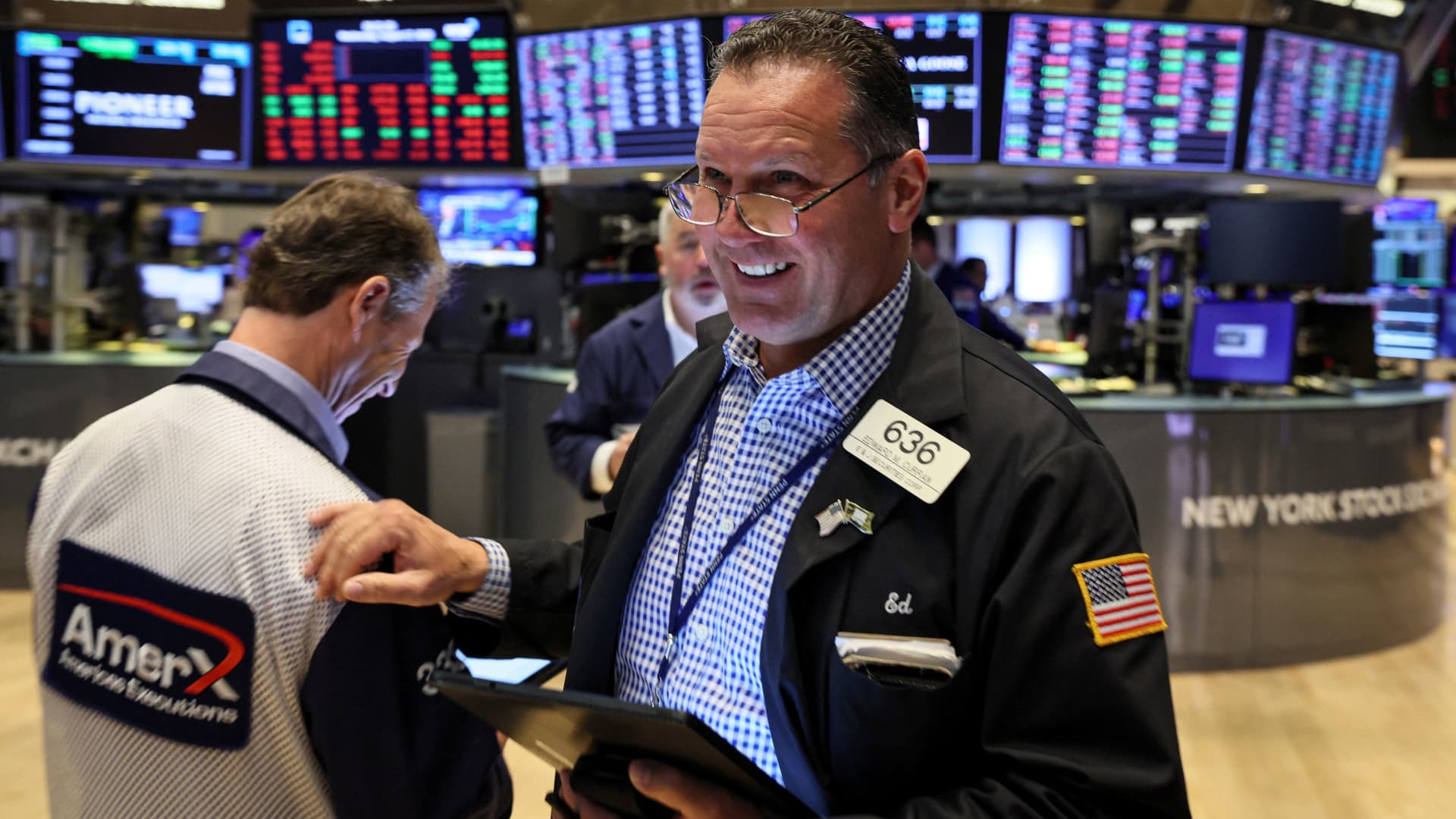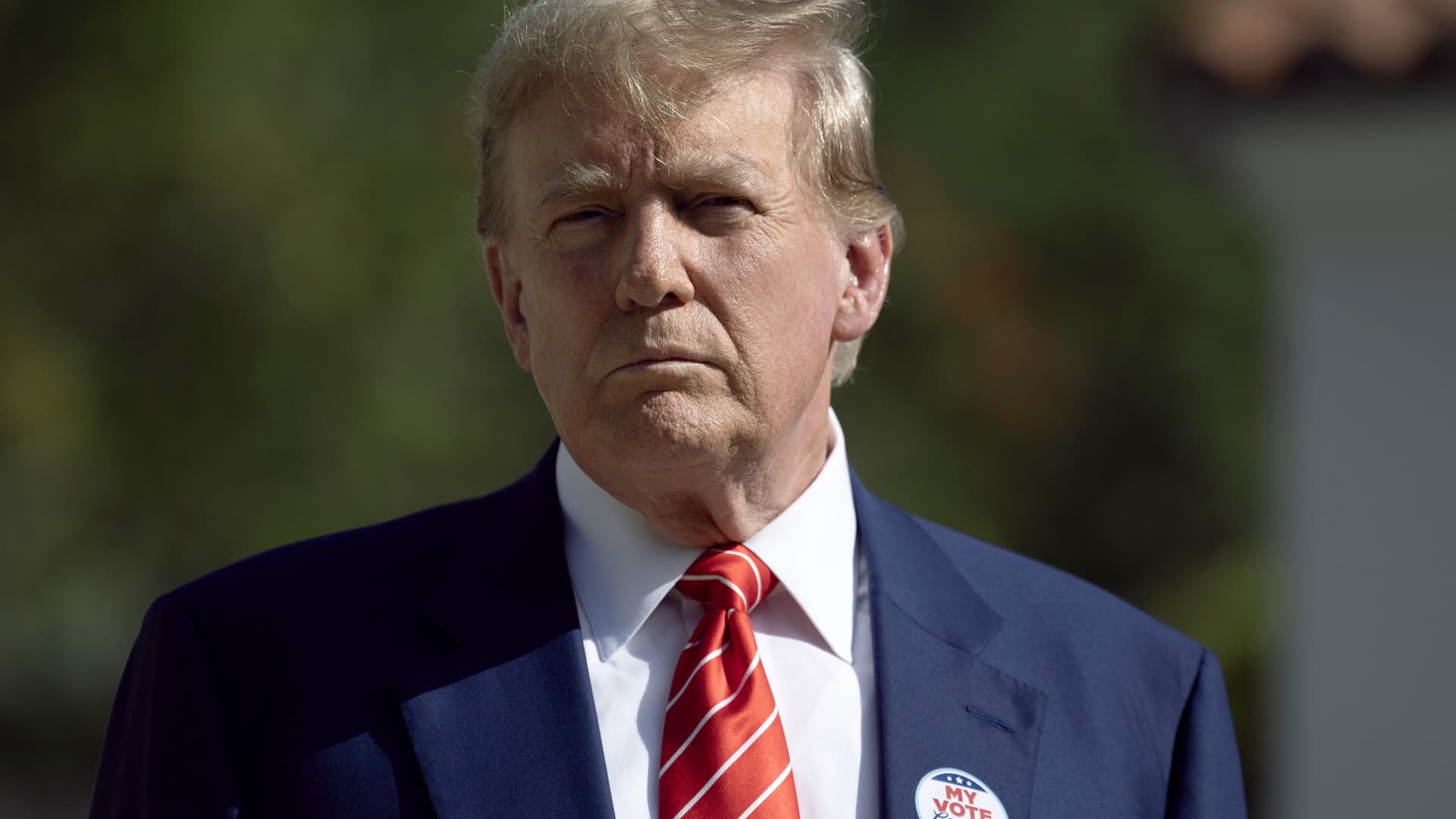‘Tactical trading vehicles’: The case for single-stock ETFs


With a wave of single-stock ETFs hitting the marketplace this summer, more firms are expanding their product lines to include funds that home in on the daily activity of one particular security.
“These are tools that are really intended to be used as a tactical trading vehicle,” Dave Mazza, managing director and head of product at Direxion, told Bob Pisani in an interview on CNBC’s “ETF Edge” on Monday.
“Specifically, someone who has the ability and interest to monitor their positions on a daily basis,” he added.
Direxion launched the first four of its single-stock leveraged and inverse ETFs last week that allow traders to obtain magnified or inverse exposure to the daily performance of Apple and Tesla. The Daily TSLA Bear 1X shares (TSLS), Daily TSLA Bull 1.5x Shares ETF (TSLL), Daily AAPL Bull 1.5x (AAPU) and Daily AAPL Bear 1x (AAPD).
There are currently single-stock ETFs for Tesla, Apple, Coinbase, Nike, Pfizer, Paypal and NVIDIA, allowing investors to go both leveraged long and to bet short against individual stocks. Tesla in particular has attracted interest, with five single-stock products.
“There was a regulatory rule change in the last couple of years that allowed this to happen,” Will Rhind, CEO of GraniteShares, said on ‘ETF Edge’ on Monday.
“We’ve had leveraged products on broad indices such as the QQQs, we’ve had leveraged ETFs on commodities which have been very popular,” he said. “And so now single stocks are the next generation in that category.”
GraniteShares also listed its suite of short and leveraged single-stock exchange traded funds last week: the 1.25x Long Tesla Daily ETF (TSL), 1x Short TSLA Daily ETF (TSLI), 1.75x Long AAPL Daily (AAPB) and 1.5x Long Coinbase Daily (CONL).
As single-stock product launches accelerate, SEC Chair Gary Gensler has already voiced his concerns ETFs. In a speech in May, he said these funds “can present unique and potentially significant risks to investors across market sectors.”
“There are some proposals in the table to limit the exposure to the retail community of complex ETFs,” Reggie Brown, principal at GTS, said on “ETF Edge” on Monday. “I think that’s a giant mistake.”
Brown explained that the concept of a single-stock ETF is not a new idea, but first proposed in 2009 when low-priced corporate equities were trading in the teens. And certain institutional investors could not hold low-priced securities.
“It serves a purpose,” he said. “I think that this type of ETF has the ability to have a thousand different corporate equities inside them and bring innovation to the marketplace. This is a good thing.”
Mazza added that broker dealers have put rules in place to make it clear that the products are intended to be used as trading vehicles, such as an aggressive trading profile.
“As opposed to limiting access, we believe that we need to promote education and the utility of how these products can be used,” Mazza said. “But also, there may be a need — particularly in heightened times of volatility — for those who are interested and those who understand the inherent risk to express viewpoints and amplify their exposure on a daily basis.”
Volumes in leveraged and inverse ETFs have soared since the start of the pandemic, and the demand has held up in 2022. The boost in trading volume of leveraged and inverse ETFs such as SQQQ and its opposite TQQQ has led to the Nasdaq-indexed ETFs outpacing the S&P 500 in the second quarter of 2022.
“During Covid, we had more engagement by new retail investors into the marketplace,” Brown said. “And as they understood more of the products that were available for them to express themselves their views, we saw an explosion in trading from a day trading perspective.”
Brown said that there are likely some investors that have amplified returns, with daily returns of anywhere between 4% and 10%. It boils down to suppliers like Direxion and GraniteShares fulfilling a demand, he said.
“There’s institutions that want to use these products, and there’s big demand for them,” Brown said. “If you look at the high-priced stocks such as Tesla, there’s a lot of day trading in these corporate equities and having it into an ETF provides leverage. It’s just meeting a need.”
This post has been syndicated from a third-party source. View the original article here.




